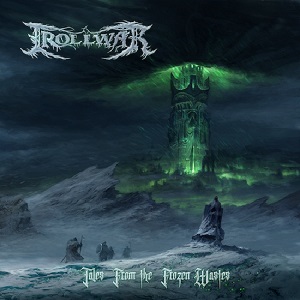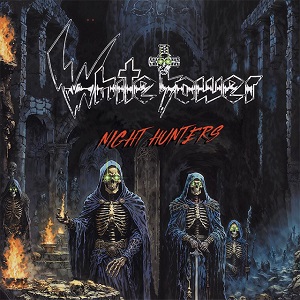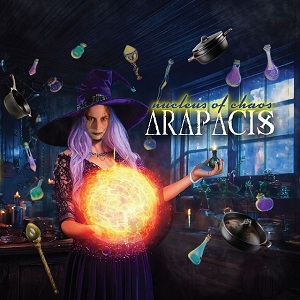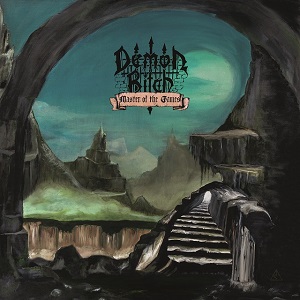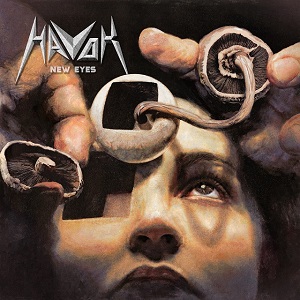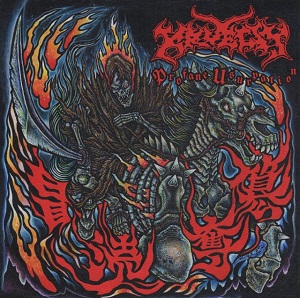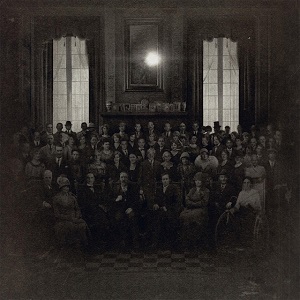Excerpt From New Book, A+ Albums: The Stories Behind 50 Rock Classics, Analyzes SOUNDGARDEN’s Badmotorfinger
October 25, 2022, 2 years ago

Ever ponder what the top rock albums of all-time are? So have I! So much so, that I’ve extensively tackled this topic with a pair of new books, A+ Albums: The Stories Behind 50 Rock Classics (Vol. 1), 1970-1982 plus 50 more for A+ Albums: The Stories Behind 50 Rock Classics (Vol. II), 1982-2000 .
And while it says ‘Rock Classics’ in the titles of both, I’ll let you in on a little secret dear BraveWords readers – there is indeed plenty of metal releases analyzed and studied throughout both (Sabbath, Priest, Maiden, Metallica, KISS, etc.). Below is an excerpt from Vol. II, which studies the Soundgarden classic, Badmotorfinger.

Badmotorfinger (Soundgarden, 1991)
If 1980 was the year of heavy metal (Back in Black, Blizzard of Ozz, Heaven and Hell, British Steel, Iron Maiden, Ace of Spades, Permanent Waves, Women and Children First, etc.), then 1991 was the year of alt-rock. After all, ‘91 gave us Nevermind, Ten, Bloodsugarsexmagik, Gish, Sailing the Seas of Cheese, Achtung Baby, Out of Time, Loveless, Bandwagonesque, and especially Soundgarden’s breakthrough, Badmotorfinger.
Originally formed during 1984 in Seattle, Washington, Soundgarden is often credited as one of the leading contributors to what was about to become affectionately known as “grunge” (which merged punk and metal, and was the antithesis of hair metal). After several promising releases on indie labels (Screaming Life, Fopp, and Ultramega OK), the band made the jump to major label A&M for Louder Than Love. But it wasn’t until Badmotorfinger that the group’s line-up became solidified – singer/guitarist Chris Cornell, guitarist Kim Thayil, bassist Ben Shepherd, and drummer Matt Cameron.
Once more, the production team for Louder Than Love had returned for Badmotorfinger (the band and Terry Date), while three separate studios would be utilized (Studio D in Sausalito, California, Bear Creek Studios in Woodinville, Washington, and A&M Studios in Los Angeles, California) – with the sessions taking place in the spring of 1991.
“We rehearsed our asses off,” Cameron said in the book Grunge Is Dead: The Oral History of Seattle Rock Music. “We did a lot of [Badmotorfinger] at our friend’s studio, Avast! Our old soundman, Stuart Hallerman, let us hole up in his new studio for what seemed like months – at least three or four months – rehearsing these songs, working on music. So by the time we got down to Sausalito, California, we recorded at this place called Studio D – that was suggested to us by Faith No More. We used Terry Date again. We never really went into the city – we were very workman-like. I think we recorded the bass and drums down there for two weeks, then we came up to Seattle again, and overdubbed the guitars and vocals at Bear Creek Studios in Woodinville, Washington. They had a really cool Jack Russell Terrier there. The sessions were pretty quick and efficient.”
“They felt Louder Than Love was a little too smooth – they wanted more of an edge,” Date also recalled in Grunge Is Dead. “At the time, most of the stuff I was doing and what they were doing wasn’t getting a whole lot of radio play. Nobody took it very seriously. Which gave us a lot of freedom to do whatever we wanted to do.” Cameron also agrees that Badmotorfinger had more of an edge, sonically. “[Badmotorfinger] was a lot darker sounding. We got a heavier guitar sound, and we used Ron St. Germain to mix it. He did a lot of records we liked – I Against I by the Bad Brains. So he mixed the drums dry, and the bass is really loud – it was a cool sound. It’s certainly different than Louder Than Love.”
It didn’t take long to discover that Badmotorfinger was a clear step up from Louder Than Love (musically, compositionally, and sonically) – especially with its kickass album opener, ‘Rusty Cage.’ “Chris came up with that intro, and augmented it by suggesting we use a wah-wah pedal on it,” Thayil once told me for Rolling Stone. “And then we came up with this really cool, backwards sound. What I love about the song is the arrangement – it has this one kind of ‘A’ section, then it goes to a ‘B’ section. I love the way it starts out kind of fast, and ends in a heavy, undanceable riff.”
And the ultimate proof concerning the song’s greatness was that the legendary Johnny Cash would offer up an excellent, deconstructed cover of the tune (with Tom Petty and the Heartbreakers backing him) on his 1996 Rick Rubin-produced album, Unchained. Lyrically about escaping an unpleasant situation (as in, “I’m going to break my rusty cage...and run”), the song also contains a personal favorite Cornell-ism – “Hit like a Phillips head into my brain, It’s gonna be too dark to sleep again.”
Up next would be the tune that would propel Badmotorfinger to chart success – the entirely Cornell-penned ‘Outshined.’ From a lyrical standpoint, it’s another track which makes little sense if each line was studied separately. However, the song is best known for what has gone on to become one of Cornell’s most recognizable – yet mysterious – lyrics, “I’m looking California and feeling Minnesota.” Just how popular did this line prove? Part of it was re-utilized in the title of a film starring Keanu Reeves and Cameron Diaz (1996’s crime-drama-comedy, Feeling Minnesota).
Up next is quite possibly the most celebrated track of Soundgarden’s entire discography that was never issued as a single, ‘Slaves & Bulldozers’ – as it has made its way into most Soundgarden headlining performances ever since its release (and was often utilized as a set-closer, complete with a never-ending feedback jam at the end). More astute listeners will recognize several topics or phrases that have appeared time and time again in Chris’ lyric writing, and “slaves” is probably at the top of the list (as exemplified by this song’s title, as well as the line “While the slaves are all working” from ‘Hunger Strike,’ and perhaps most obviously, the name of his future project, Audioslave). The song also features some of Chris’ most intense singing ever – where he pushes his vocals further than he ever has before (or after), when he sings the repeated line, “Now I know why you’ve been shaking.”
And then...quite possibly the baddest tune off Badmotorfinger – ‘Jesus Christ Pose.’ While it is understandable to assume that the tune focuses on the topic of nefarious preachers and televangelists (a subject previously explored on ‘Hand of God’ and Temple of the Dog’s ‘Wooden Jesus’), Cornell would explain in interviews how it targeted rock stars and fashion models who replicated Christ-like poses in photographs. However, one can’t help but think that Cornell himself was calling the kettle black, as he not only was modeling a Christ-like look around this time, but also, was known to pose with his arms outstretched for photoshoots (while shirtless, nonetheless!).
‘Face Pollution’ is an explosive punk rocker clocking in at a mere 2:23 (the shortest composition on the entire album), with some of the most offbeat lyrics Cornell ever offered (“Scared by monkey faces, drowned in shark fins” and “Now I’ve made a mask, it looks like fish heads”). Up next is probably one of the most underrated selections of Soundgarden’s entire recording career, the enormously melodic ‘Somewhere.’ Penned entirely by Shepherd, the song absolutely shoulda/coulda been a single, but mysteriously never was selected – and shows that although Cornell was an incredibly gifted lyricist, Shepherd could also put pen to paper and provide passionate prose.
And then...the album’s first hard left turn, the amusingly-titled ‘Searching with My Good Eye Closed.’ Featuring the most peculiar beginning to a SG song (what sounds like robotic phrases from a children’s teaching toy – actually spoken by Seattle DJ Damon Stewart – before it leads to a demonic shriek), as well as one of Kim’s most wailing guitar solos at the end, the song was used to great effect as the set opener on the album’s supporting tour, and would often find its way into their setlist subsequently.
A re-recording of ‘Room A Thousand Years Wide’ follows, which turns out to be a far superior rendition when compared to the earlier Sub Pop single version. Saxophonist Scott Granlund and trumpeter Ernst Long lend a hand once more, while a single guitar note feeding back is heard squealing throughout most of the song (which was not included on the Sub Pop single version). And whereas the single version fades out, the BMF version actually has an honest-to-goodness ending. The album’s only ballad-y type tune, ‘Mind Riot,’ follows, which due to such lyrics as “Candle’s burning yesterday, Somebody’s best friend died, I’ve been caught in a mind riot” leads one to believe that it may have been inspired by the passing of Andy Wood (who Cornell was friends with).
Another tune featuring horns is up next, ‘Drawing Flies’ – sounding like a not-too-distant-cousin of the earlier ‘Face Pollution,’ as it certainly musters up quite a bit o’ punk rock attitude. Only three seconds longer than the aforementioned speedy little ditty, ‘DF’ features another one of my favorite Cornell-isms – “Sitting here like uninvited company, Wallowing in my own obscenities, I share a cigarette with negativity.”
The entirely Cornell-penned ‘Holy Water’ is to the best of my knowledge the only song on BMF that was never performed live (or if it was, was done so very infrequently), and seems to be about a topic that its composer would visit several times – religion. Closing BMF is another ditty that was never a regular addition to the setlist (but did enjoy at least a few on-stage airings over the years), ‘New Damage,’ which turns out to be quite a cacophonic composition. Lyrically, ‘ND’ sounds like an attack on the right wing government of the US, and contains (you guessed it!) another killer Cornell-ism – “The wreck is going down, Get out before you drown.”
Released on October 8, 1991, the cover art for Badmotorfinger was designed by Mark Dancey (who was the guitarist of an overlooked Sub Pop recording artist at the time, Big Chief) – which features gold colored blades (that seem to resemble an “S” or an “M,” depending on how you gaze at it), a mini sparkplug in the middle (a motorfinger, geddit?), with a blurred black and white photo of the band behind it (looks like it’s Ben and Matt), with a new band logo in red on top (which would reappear from time to time in the future).
However, it would take time for Finger to simmer, before connecting with the masses thanks to the non-stop media coverage of grunge and playing shows with the biggest of the big (Metallica, Guns N’ Roses, and Lollapalooza). Also, one mustn’t underestimate the importance of MTV’s heavy airing of the “Outshined” clip – which included scenes of the band miming the song inside what appears to be a dirt-floored steel mill, with lotsa steel barrels scattered around, and fire appearing to be the main source of lighting for the band. Peaking at #39 in both the US and UK (and coming in at a respectable #86 on Billboard’s year-end album chart for 1992), at last count, Badmotorfinger was certified double platinum.
And several of Soundgarden’s peers had plenty of praise for the LP, when asked about it in the book Survival of the Fittest: Heavy Metal in the 1990s. Including Devin Townsend – “When Badmotorfinger came out, that was one of the ones when you’re 18, you have a strict regimen of records that everybody allows each other to listen to. And Badmotorfinger was part of that. I remember listening to it and going, ‘Holy shit. Can that guy ever sing!’ That became a real ‘practice record’ for me, too – driving around in the car and singing to Badmotorfinger was really a great way for me to build some chops.”
Rip editor Lonn Friend added, “I was there [at Rip] until ‘94, and grunge…we just covered the rock ‘n’ roll that was affecting fans that was great. I was deep into Soundgarden’s Badmotorfinger. I thought ‘Jesus Christ Pose’ was just a stellar, powerful, clarion fuckin’ voice – Chris Cornell was almost this Christ-like figure, and this voice in rock that deserved cover treatment. So we put him on what I think was his first national cover [the July 1992 issue].”
And one final verbal high-five, from Monster Magnet’s Ed Mundell – “Badmotorfinger was a great record. When that came out, that record just blew everybody’s minds. When you first heard ‘Jesus Christ Pose,’ it’s like, ‘What the hell is this?’ When Jane’s Addiction first came out, it was like the same kind of vibe I got – when I first heard Soundgarden for real.”
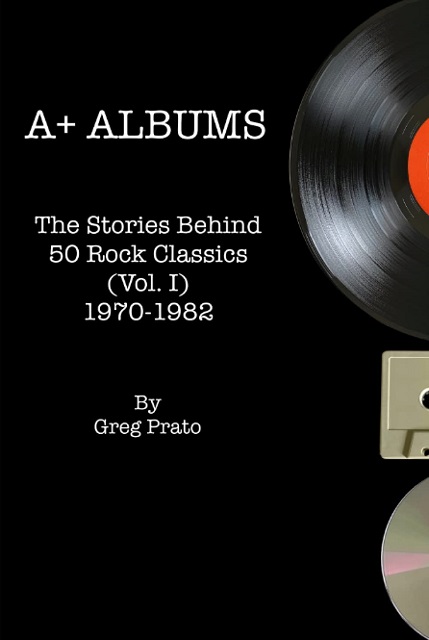
Both A+ Albums: The Stories Behind 50 Rock Classics (Vol. 1), 1970-1982 and A+ Albums: The Stories Behind 50 Rock Classics (Vol. II), 1982-2000 are available in paperback, hardcover, and Kindle formats, and soon, both will be available in audio versions.
(Chris Cornell photo by Kurt Christensen)


